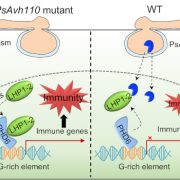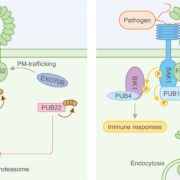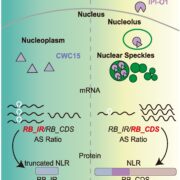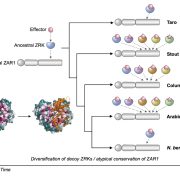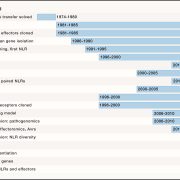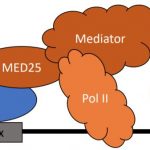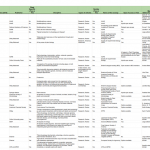The Complex Process of Plant Innate Immunity
Liu et al. demonstrate that EIJ1 acts as a key repressor of plant immunity. Plant Cell. https://bit.ly/37MF1tg
By Hailun Liu, Yuge Li and Xingliang Hou, South China Botanical Garden, Chinese Academy of Sciences
Background: Plants have evolved a complicated network to modulate the immune response. To defend themselves against pathogens, plants employ two main regulatory strategies: pattern-triggered immunity (PTI) and effector-triggered immunity (ETI). PTI is governed by pattern recognition receptors. To facilitate infection, virulent pathogens suppress PTI by secreting pathogen effectors. The low-level resistance that the plant displays to these virulent pathogens is termed basal resistance. On the other hand, ETI is mediated by plant-encoded disease resistance (R) proteins, which can directly or indirectly recognize the presence of effectors secreted by pathogens. Compared with basal resistance, ETI induces a stronger and faster defense response against pathogens and is often accompanied by local cell death, a characteristic feature of the hypersensitive response.
Questions: Does EIJ1 function as a negative regulator of plant innate immunity and what is the molecular mechanism?
Findings: We found that EIJ1, which acts as a chaperone DnaJ protein in response to pathogen infection, functions as an essential negative regulator of plant immunity by interacting with ENHANCED DISEASE SUSCEPTIBILITY 1 (EDS1) . The loss-of-function mutation of EIJ1 did not affect plant growth but significantly enhanced pathogen resistance. Upon pathogen infection, EIJ1 relocalized from the chloroplast to the cytoplasm, where it interacted with EDS1, thereby restricting the pathogen-triggered trafficking of EDS1 to the nucleus and compromising resistance at an early infection stage. Over the course of disease development, EIJ1 was gradually degraded, allowing the nuclear accumulation of EDS1 for transcriptional resistance reinforcement.
Next steps: Normally, the EIJ1 is located in chloroplast. When the plants are invaded by pathogens, the EIJ1 protein is rapidly released to the cytoplasm. Next, our study will focus on whether the effectors in Pseudomonas syringae pv. tomato DC3000 promote the transfer of EIJ1 from chloroplasts to the cytoplasm
Hailun Liu, Yuge Li, Yilong Hu, Yuhua Yang, Wenbin Zhang, Ming He, Xiaoming Li, Chunyu Zhang, Fanjiang Kong, Xu Liu and Xingliang Hou. (2021). EDS1-Interacting J Protein 1 (EIJ1) Is an Essential Negative Regulator of Plant Innate Immunity in Arabidopsis. Plant Cell. https://bit.ly/37MF1tg



